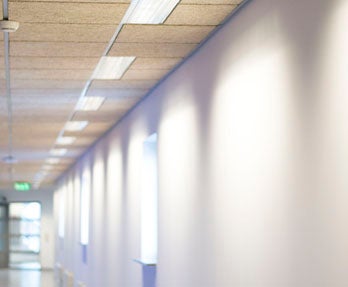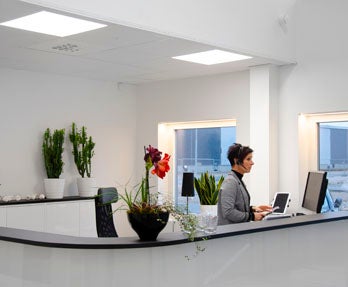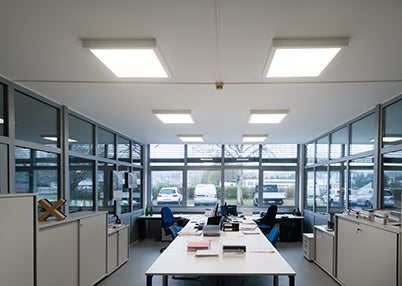Right lighting for increased well-being
Lighting is an important piece of the puzzle in creating a pleasant and healthy workplace and school environment. Yet too many workplaces, offices and classrooms have inadequate lighting with a negative impact on our health. With the right lighting, you can easily raise energy levels, concentration and well-being among employees and reduce headaches, tired eyes and back pain.
How does light affect us?
How light affects us is far more complex than many seem to realize, and is today a highly topical research question. Recently, a new light-sensitive nerve cell was discovered in our eye that drives our inner clock and helps us maintain a good circadian rhythm. This reacts to light, and in turn regulates the production of the sleep hormone melatonin and the hormone cortisol which makes us alert. Originally, this nerve is adapted to a life outdoors and thus to the natural light - the path of the sun - and not to sit indoors in front of a computer most of the day. In other words, for this internal clock to work in the best possible way, the indoor lighting should mimic the sun's light so that we can feel as good as possible and be able to feel alert and motivated throughout the day.
What does "poor lighting" mean?
Poor lighting is an all too common sight in many workplaces and schools. It may be that the lighting is too dim or insufficient and simply makes it too dark in the room. Unpleasant, flickering or misdirected lighting dazzles and creates discomfort. But it can also be a matter of the lighting being misplaced and not adapted to the design of the room or the activities that take place there. In the long run, inadequate lighting creates several health problems.
Poor lighting causes:
- Fatigue
- Tension and pain in neck and back
- Tired eyes
- Headache
- Concentration difficulties
- Stress
- Sleeping problems
Create sustainable lighting comfort
When choosing new lighting, several different factors play a role - what activities should be performed in the room, how much natural light comes into the room, what color the walls are, and how the room is designed. There are some basic rules of thumb for creating a healthy lighting environment.

Sensor-controlled lighting

Ambient light

Tunable White for high comfort




